"Of all flowers, me thinks a rose is best." Those words attributed to Shakespeare in 1634 still reflect the opinion of many today. Roses are one of the world's most popular flowers. Their ephemeral beauty and delicate fragrance have universal appeal. Roses are well adapted to many different environmental conditions. They are useful as landscape plants and prized as cut flowers. Since they are the product of centuries of breeding and selection, many shapes, forms, and colors provide endless types to select from and use.
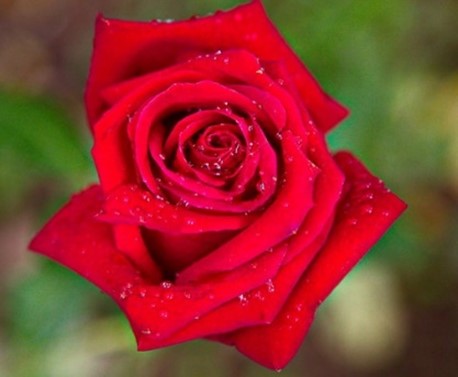
New cultivars of roses are constantly being introduced. For years, the All-America Rose Selections (AARS) program evaluated new rose introductions in test gardens throughout the country and presented awards to the highest rated new cultivars. In 2016, the American Garden Rose Selections (AGRS) program took its place in evaluating and identifying outstanding new roses.
Founded in 1892, the American Rose Society is an organization dedicated to the culture and appreciation of roses. Its website contains a wealth of information including suggestions for finding a rose for your garden.
Classification of roses
The American Rose Society recently enacted a new classification scheme that reflects the development of the rose as a garden plant. There are three main groupings: Species Roses (i.e. wild roses); Old Garden Roses (those in existence before 1867); and Modern Roses (those introduced after 1867).
The many types of roses available offer selections for almost any situation. Hybrid tea, floribunda and grandiflora are the most commonly planted types. These require a rather rigorous pest control program to maintain them in a vigorous, productive condition. Shrub and species roses require minimal amounts of pest control. Once established, they grow and flower for years with very little care.
Species roses

Sometimes referred to as “wild roses,” there are more than 300 rose species. Most species roses bear flowers that are single-petaled (4-8 petals). Normally, they bloom only once per year on plants that range in size from two to twenty feet. Most are known by their botanical name. For example, Rosa setigera is a species rose native to Missouri.
Old garden roses
Old garden roses as those types that existed prior to 1867, the year of introduction of the very first hybrid tea rose. Following is a list of some of the more noteworthy old garden roses.
Alba
Alba roses date from before 100 A.D. and sometimes are called the “White Rose of York.” They are richly perfumed and can thrive under difficult conditions, even partial shade. Plants have a tall, slender upright growth habit to a height of eight feet and bear blooms of blush pink or white, and grey-green foliage. They are disease-resistant but bloom only once per year in mid-summer. Albas are extremely winter hardy and very self-sufficient. Because of their size, they make good background plants in the landscape.
Bourbon
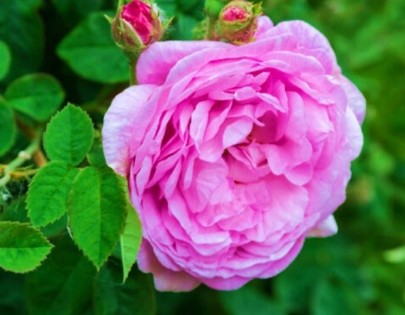
First appearing in the 1800s, Bourbon roses originated on the Isle of Bourbon (now, Reunion) in the Indian Ocean. These roses tend to have large, full flowers and are richly scented with rose fragrance. Most Bourbons rebloom reliably and bear flowers ranging in color from white to pink to deep scarlet. Growth habit is vigorous and lends itself well for training on a fence or pillar. Bourbons are occasionally subject to rose blackspot and powdery mildew, which is not a major drawback because of the overall vigor of the plant. Bourbon roses are very winter hardy.
Centifolia
Literally interpreted, Centifolia means “hundred petals” and often is referred to as “cabbage rose,” because of the size and shape of its blooms. Cultivars of Rosa centifolia are depicted in the paintings of the Dutch masters. Flowers are large, often with 100 or more petals. Mainly available in shades of pink to lavender, flowers are very fragrant. Plants are vigorous, have coarse leaves and produce canes that might reach 20 feet in length. Centifolias are one of the oldest roses under cultivation. Although they bloom only once yearly, they are noted for their disease resistance and winter hardiness. Because of their long canes, they often are trained on fences or pillars.
China
The original roses in this class were taken from China to Europe, where they were widely bred with other rose classes. The result was repeat-blooming plants that changed the Western world of roses, including the introduction of a bright, crimson flower color. Chinas are somewhat tender and benefit from winter protection in cold climates. Their flowers are smaller and come in shades of pink, copper and red, and often have a sweet, fruity fragrance. Plant growth habit ranges from dwarf bushes to vigorous climbers.
Damask
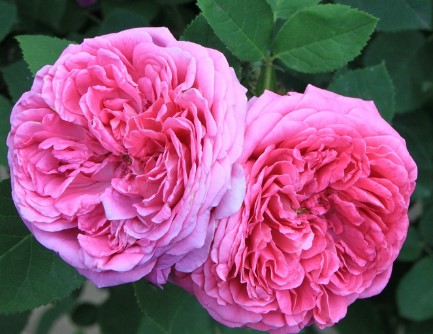
Thousands of years old, Damask roses are thought to have been brought to Europe from the Middle East during the Crusades. Apparently, they resulted from crossing Rosa gallica with Rosa moschata. Plants are very thorny and bear graceful, arching canes to seven feet that tend to bend from the weight of their flowers. Damasks bear flowers that are known for their strong, “old rose” fragrance. Flowers of Damask roses grown commercially for the production of rose oil. Flowers appear only during mid-summer and range in color from white to pink to red. Extremely winter hardy and disease resistant, Damasks require little maintenance.
Gallicas
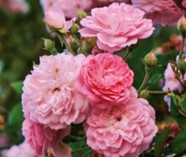
The Gallicas are the oldest Western rose. Grown by the Greeks and Romans they later were bred by the Dutch and French. They exhibit a great flower color range that includes striped blooms. Flower fragrance is variable. Plants are upright in growth habit but compact in size. Given their tendency to sucker profusely and spread, they can fill in an area quickly. Foliage is dark green and roughly textured. Gallicas bloom only once per year.
Moss
The Moss rose is a chance mutation (a.k.a., sport) of Centifolia roses. Their common name is derived from a moss-like growth on their sepals and calyx that smells like pine. The result is a fuzzy appearance unique among the world of roses. Moss roses are very disease-resistant and low maintenance. While most bloom one time per year in early summer, some are repeat bloomers. Plant size varies with cultivar. Flower color ranges from white to deep crimson.
Noisette
Noisette roses originated in Charleston, South Carolina, at the plantation of John Champney and are the first roses bred in America prior to the hybrid tea. They are also important for introducing the colors of orange and yellow. Their ancestry includes the China rose. Plants are tall and best treated as climbers. Most Noisettes are winter hardy only to Zone 7 but can be grown further north if trained against a south-facing wall. They are considered by most to be unequaled among climbing roses for overall vigor, disease resistance, fragrance, and reblooming ability.
Portland
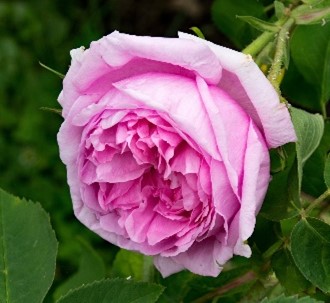
Portland roses were discovered in 1775 by the Duchess of Portland and were popular in the mid-1800s. They have a mixed heritage of China, Damask and Gallica roses and were among the first reblooming garden roses. The flowers are multi-petaled, very fragrant, and usually pink. Plants have dark green foliage and are shrub-like, often growing only to 12 inches in height. Because of their petite size, they are ideal for small gardens or containers. Slow to establish, Portland plants lack the cold hardiness of other roses and benefit from winter protection in zone 5.
Rugosa
Rosa rugosa and its hybrids are easy to grow because of their extreme vigor and winter hardiness. The latter makes them well-suited for windy and exposed sites. Plants grow up to 6 feet tall but can be kept shorter with pruning. Season-long bloomers, Rugosas develop attractive orange fall foliage color and bright red hips. Their foliage has a rough surface and dark green color. Flowers are both single and double, and available in a variety of colors. Rugosas are excellent for screens or hedges where large plants are needed.
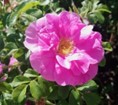
Tea
These roses are similar in history and cultivation to China roses. A cross between Rosa chinensis and Rosa gigantea, Tea rose plants bear slender canes which causes flowers to face outward or down. Their leaves are glossy green and sharp-pointed. Flowers, most of which range in color from apricot to yellow to peach, often have only five petals. They normally unfurl in an elegant, spiral manner and are prolific re-bloomers. Additionally, flowers are uniquely scented with a fragrance that reminds some people of black tea or tobacco. Roses in this class are very vigorous and disease resistant, but hardy only to zones 6-7.
Hybrid Perpetual
Hybrid Perpetuals are the roses that bridge the gap between the roses of the early 1800s and the roses of today. Truly a hybrid, this class was developed by crossing Bourbon roses with just about every other class of rose. Although variable in size, most are relatively tall and grow to a height of about six feet. Most hybrid perpetuals bloom heavily in late spring and repeat more sporadically the remainder of the growing season. Often mistaken for hybrid tea roses, flower color ranges from white to crimson with outstanding fragrance. Unfortunately, Hybrid Perpetuals are only hardy to zone 5 and benefit from winter protection. Additionally, they lack the disease resistance of other old garden roses and can suffer from rose blackspot and powdery mildew.
Modern roses
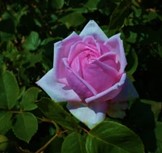
As their name implies, modern roses are relatively new to the gardening scene and include those roses introduced after 1867. The latter is the year the first hybrid tea cultivar ('La France’) was introduced. The introduction of ‘La France’ was considered a milestone for several important horticultural reasons. As a hybrid between two species, it possessed the general habit of a hybrid perpetual as well as the elegant buds and free-flowering nature of a tea rose. Rose breeders were quick to recognize this accomplishment and, with proper selection of parents, continued to develop new flower forms, colors plant growth habit, and size. Today, there are more than 30,000 cultivars available to the gardening public.
Hybrid Tea
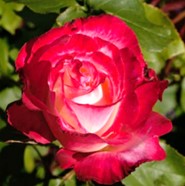
The most popular of all roses today are the hybrid teas. They originated from crosses between hybrid perpetuals and the tea rose imported from China. Flowers are large (30 to 50 petals), elegant, and often have a delicate fragrance. They are borne on long stems either singly or with several side buds. Available in (seemingly) an endless array of flower colors, blue and black are the only colors that cannot be found in hybrid teas. Plants are vigorous, but not as hardy as most of the old garden roses. Winter protection and a somewhat rigorous pest management program are necessary to maintain healthy plants.
Floribunda

Floribunda roses were developed from crosses between hybrid teas and polyanthas. Flowers are intermediate in size between the two parents but have the same form and substance as hybrid teas. Floribundas are slightly hardier than hybrid teas and produce a greater abundance of flowers. Plants tend to remain smaller and bushier than hybrid teas, which makes them suitable for mass plantings. They often are used as low hedges, in borders, and in containers with other landscape plants.
Grandiflora
Grandiflora roses are the result of crosses between floribundas and hybrid teas. This group combines the free-flowering characteristics of the floribundas with the size and quality of the bloom of the hybrid tea. Flowers usually are double but lack fragrance. Grandifloras tend to carry their flowers in clusters on top of tall stems. Because of their height, grandifloras are good candidates for use as a screen or in the back of a border.
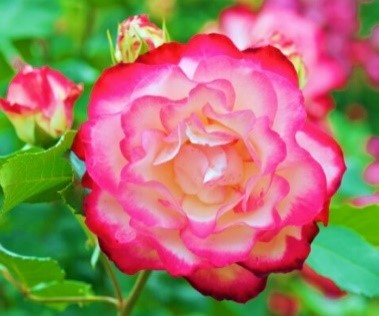
Polyantha
Polyanthas are a class of rose that trace their origins to a selection of Rosa multiflora named 'Polyantha'. Polyanthas have some of the same traits as Rosa multiflora but tend to be smaller in stature and rebloom. The flowers of polyantha roses are smaller than the floribundas but borne in larger clusters. Plants are hardy, bushy and relatively disease resistant. They are excellent for mass plantings and borders. Cultivars are more limited, and flowers are not as suitable for cutting as the previous types.
Hybrid Musk roses
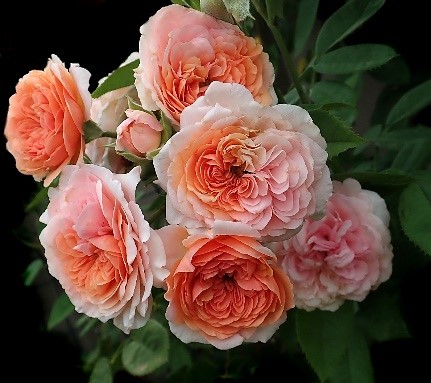
Although delicate in appearance, hybrid musk roses are durable plants. Developed in England early in the 20th century from relatives of Rosa moschata, hybrid musks lately have experienced a resurgence in popularity. Available in several forms (e.g., bushes, climbers, etc.), they are extremely disease resistant as well as being winter hardy through zone 5. One noteworthy trait is their ability to tolerate partial shade. Most cultivars bloom well when exposed to just five hours of direct sun daily. Their flowers are small to medium in size and appear in clusters. Most cultivars have a strong fragrance and rebloom reliably.
Classification by growth habit
Tree
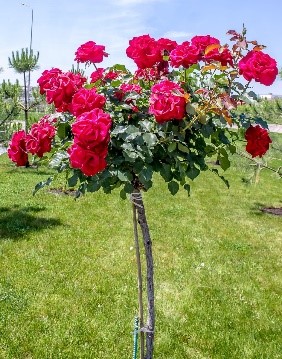
Tree roses are formed by grafting hybrid tea or floribunda cultivars on top of a long stem or "standard." Tree roses generally need support and are susceptible to winter injury. They make interesting accent plants. To avoid winter injury, wrap the top with burlap and protect stems with burlap and evergreen boughs.
Miniature
Miniatures are dainty little rose plants which are replicas of their larger relatives. They descended from a single dwarf China rose called ‘Rouletii.' Flowers are small and plants range from 6 to 18 inches in height. Leaves and even thorns are perfect miniatures. Plants are bushy and most are quite hardy. They are useful for low edging and in rock gardens. Many varieties are available from specialists in many colors and blends.
Climbing
This category includes all types of roses (e.g., hybrid tea, floribunda, etc.) that produce long, vigorous cane growth that can be trained on arbors, trellises, or fences. Lacking tendrils, climbing roses don't climb in the sense of many other plants. Instead, their long canes intertwine or scramble over any available support available. Several different categories of climbing roses are available with slight differences in hardiness and culture.
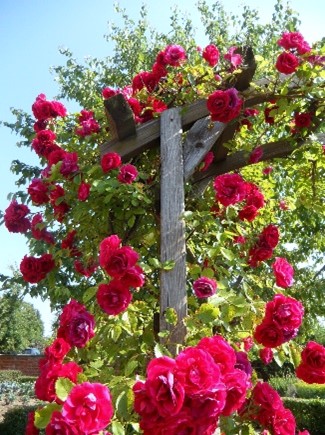
Rambling
Ramblers are an "old-fashioned" type of climbing rose. Plants are vigorous and fast-growing. Small flowers in large, dense clusters are produced only in spring. Foliage is glossy and plants are hardy, but most varieties are susceptible to a foliage disease called mildew. They are generally being replaced by newer climbing types.
Pillar
Roses of this type are intermediate between bush types and climbers. Canes are long but not quite as vigorous as those of the climbers, and the wood tends to be too stiff to bend along a fence or trellis. Therefore, they are normally trained against a post for support.
Creeping
This group of roses also can be categorized with the climbers. These roses have very pliable stems that make them suitable for use as groundcovers because the stems normally lie close to the ground. Alternatively, they may be trained upward. The very hardy creeping rose Rosa wichuraiana, or memorial rose, has been used in the breeding of many newer climbers and ramblers.
Shrub
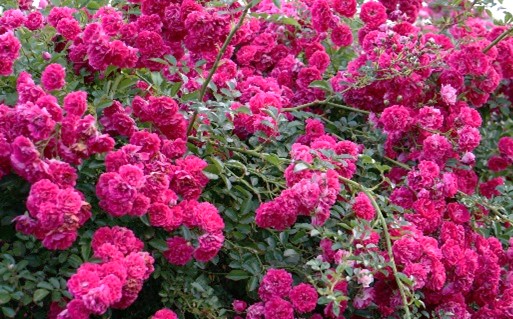
The term "shrub rose" (sometimes called landscape rose) is given to a miscellaneous group of species, hybrids, and varieties. They have also been listed as "old-fashioned" roses, although new varieties have been developed. As a group, they are hardy and bear a wide range of flower forms and colors.
Modern shrub roses are becoming easier to grow and more desirable in the landscape as the result of efforts to create roses with improved cold hardiness and disease resistance. At the same time, these roses are being bred to have improved flower quality, appealing growth habits, and attractive foliage that will complement just about any garden style.
Few hardy garden shrubs can compare with roses for astonishing diversity of color and the continuous bloom throughout the summer. Most modern shrub roses are on their own rootstock. Therefore, if they die back to the crown in the winter, they will recover vigorously each spring from the roots.
The following represent several series of modern shrub roses. Most contain numerous cultivars and are available in a variety of flower colors.
Parkland
Canadian rose breeders developed the Parkland series of roses for their ability to do well under extreme winter cold and drought conditions. The most popular of the series are the Morden shrub roses. They produce beautiful hybrid-tea-like blooms throughout the season, and plants have a compact growth habit with attractive glossy foliage.
Explorer
Another Canadian series, the Explorer roses, offer disease resistance, excellent winter hardiness, and repeat blooming characteristics. One of the most popular of the Explorer series is 'Champlain'. It produces clusters of rich, velvety red blossoms continuously from May to frost. This extremely hardy rose has a compact growth habit that makes it perfect for any garden.
Buck
Buck roses were developed by Dr. Griffith Buck at Iowa State University. His goal was to combine cold tolerance with disease resistance and abundant flowering. 'Carefree Beauty' is one of the best-known Buck roses. It combines winter hardiness and disease resistance with large, fragrant, semi-double rose-colored flowers throughout the growing season. It also bears a crop of hips that add color to the garden throughout the winter.
Meidiland
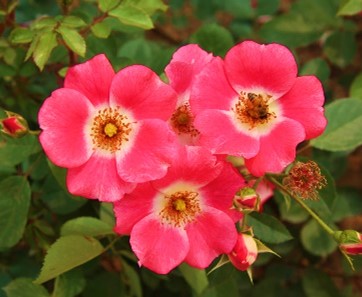
Renowned for their vigorous, spreading growth habit, Meidiland roses are attractive in single plantings and when planted in mass. Meidiland roses were developed in Europe for disease-resistant, attractive glossy foliage and heavy blooms throughout the season. The vigorous, trailing growth habit of the canes makes them a good choice for a tall ground cover. In the fall, the plant bears bright red hips that persist well into winter. Most Meidiland roses benefit from some winter protection in Missouri.
Drift
The Drift series of roses were bred to be low-maintenance, ground cover roses. They are the result of crossing full-size groundcover roses with miniature roses. Members of the series exhibit a short, spreading growth habit and bloom from spring through frost with very little maintenance. Extremely winter hardy, Drift roses are used to brighten borders, fill in empty spaces, meander around established plants, and can control soil erosion on hillsides and slopes.
Knock Out
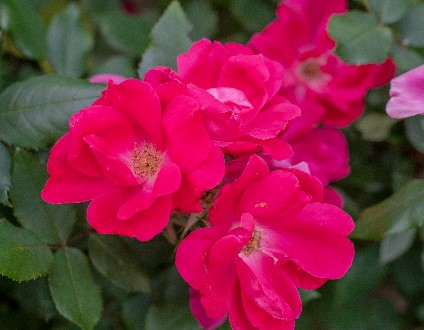
The Knock Out series is advertised to have more “flower power” than any other type of shrub rose. Rosa 'Knock Out' (a.k.a. RADrazz) was developed by amateur rose breeder William Radler in 1989 and introduced to the gardening public 11 years later. Immediately, it was selected as an All-American Rose Selections winner. Plants of ‘Knock Out’ are medium-sized, bushy shrubs that achieve a mature height of six feet with an equal spread. Somewhat of a floribunda in style, plants are extremely disease resistant and winter hardy and display amazing flower production. Since the introduction of the original ‘Knock Out’, nine additional cultivars have been added to the series.
Essential growing conditions
Light
Roses grow best in full sunlight. If full sun is not possible, locate them where they get a minimum of six hours of bright sunlight each day. A location where they get only morning sun is to be preferred to one where they get only afternoon sun. Morning sun helps dry leaves quickly and reduces disease problems. Afternoon sun in midsummer fades and burns petals.
Drainage
Roses will not tolerate soggy soil. Good drainage is necessary to provide adequate air (oxygen) for proper root development. To test soil for drainage, dig a hole about 18 inches deep and fill it with water. The water should drain from the hole in 90 to 120 minutes. If well-drained areas are not available, consider planting them in a raised bed or installing subsurface tile drainage.
Competition
The roots of most roses don't compete well with those of trees and shrubs planted close by. Therefore, roses are generally most successful if grown in beds away from large plants. If this is not possible, extra fertilizer and water are necessary to make up for that taken away by neighboring plants. Rose roots compete poorly with grass roots; therefore, lawn grass must not be allowed to grow to the base of roses.
Soil
Roses are quite tolerant of many different soil types. However, they produce best growth in a relatively fertile soil high in organic matter. A soil that produces good vegetables will produce good roses. Heavy clay subsoil or sandy soil with low fertility must be improved if roses are to be grown successfully in them.
Where it is available, aged manure is one of the best soil additives in preparing for roses. Where not available, peat moss or leaf compost are beneficial. Add about one-half pound of superphosphate to each bushel of organic material applied to the soil.
Apply a layer of organic matter 2 to 4 inches thick on the surface of the area for a bed. Dig it into the soil as thoroughly as possible. It is best to dig up the area well in advance of planting. Many gardeners prefer to dig the area in fall and again in spring. When planting in individual holes, remove all the soil and thoroughly mix it with the organic matter. Use about one-part organic material to two parts soil. Don't work soil when it is excessively wet.
Selecting plants
Grades
Roses are usually sold as two-year, field-grown plants. They are graded according to vigor and size. The main grades are 1, 1-1/2 and 2. Number 1 grade is the largest, and each succeeding grade represents a slightly smaller plant.
The size of top grades will vary with variety, but always select only the top grade available for the desired variety. Most nurseries handle only 1 and 1-1/2. These grades normally are worth the extra investment. They produce more vigorous plants with abundant flower production. "Bargain" roses, sold at extremely low prices, are often culls from the growing field and are below the grading standards for the lowest grade. Extreme care in selection is advised. Cheap rose plants generally are not a bargain.
Ways to buy rose plants
Bare root (packaged)
Roses may be purchased bare root from local nurseries, mail-order nurseries and many other retail outlets. When selecting these plants in a store, make sure that the canes are plump and green with smooth bark that is not shriveled. If roots can be seen, select plants with a good, well-balanced root system with a fresh appearance. A plant in good condition will feel heavy; a dried-out plant will feel comparatively light and its twigs will be brittle if bent.
If you plan to purchase rose plants from a local store, select them as soon as possible after the shipment has arrived. Stores are often too warm and the dormant rose plants soon develop premature, weak growth. Over a few weeks, this can weaken or even kill the plant.
Container
Plants started in containers can be purchased and planted at almost any time during the growing season. Plants can be selected in flower and planted for immediate effect. But only container-grown plants in fairly large containers should be used. Number 1 roses should be purchased in at least a 2-gallon container. Number 1-1/2 or 2 plants should be in at least a 1-gallon container. Field-grown plants that are potted in small containers often have too many roots removed to develop vigorous growth after planting.
Planting roses
Time
In general, the best time to plant roses depends on winter temperatures. Where temperatures don't drop below -10 degrees Fahrenheit, either fall or spring planting is satisfactory. If you live in an area where winter temperatures dip below -10 degrees Fahrenheit, spring planting is preferred. Plants should be planted in a dormant condition if purchased bare rooted, but container-grown plants may be planted throughout the growing season.
Spacing
Temperature can influence spacing of rose plants. In areas where winter temperatures are severe, plants don't grow as large as in mild climates. Therefore, in most of Missouri, hybrid tea roses should be spaced 2-1/2 to 3 feet apart. Large vigorous growers such as hybrid perpetuals need 3 to 5 feet of space and the climbers need from 8 to 10 feet of space.
Planting bare-root roses
Preparation
Examine bare-rooted roses before planting. Packaged plants have been pruned and rarely need additional pruning.
After purchase, unpack the plants at once. Plants sold in a bare-root condition are often slightly dried. If they will be set out the same day or the following day, soak the roots for several hours or overnight. Don't soak plants unless they can be planted promptly. Soaking for more than 24 hours may damage the root system.
If plants will not be set out within 24 hours, moisten the packing material, and repack the plants. Keep them in a cool place above freezing. They can be kept two to three additional days in this way. If the plants must be held longer, heel them in outdoors. This is done by laying the plants in a shallow trench and covering the roots with soil. If tops are dried out, it will be beneficial to place the entire plant in the trench and cover both top and roots until planting.
Setting plants
When plants are ready for planting, make sure the roots don't dry while the area is being prepared. Keep them in moist wrappings or in a bucket of water while preparations for planting are being made. The soil or bed should have been prepared in the fall or early spring as time and weather conditions permitted. Preferably, soil should be worked up at least four to six weeks before roses are planted in a new bed.
Planting bare-root roses
 Figure 1
Figure 1
Dig hole to allow full spread of roots. Separate topsoil from subsoil.
 Figure 2
Figure 2
Form a cone-shaped mound of prepared topsoil in center of hole. Firm slightly.
 Figure 3
Figure 3
Spread roots over cone-shaped mound, (a). Position plant so bud union (b) is slightly below soil level (c).
 Figure 4
Figure 4
Water, then fill hole with soil, mounding it up around the base of each plant.
The hole should be large enough to permit full spread of the roots without touching the edges of the hole. The planting holes should be at least 12 to 16 inches deep and 18 to 20 inches wide (Figure 1). Larger holes will be beneficial.
Depth of planting
Modern hybrid roses are budded on special rootstocks. The point where the top and roots come together, known as the bud union, forms a "knuckle." If this union is injured by cold weather, the entire top may die and the roots will produce a "different" and often undesirable plant. The rootstocks of a grafted rose are selected for their hardiness and not for their ornamental appeal. In southeast Missouri, plant roses so that this union is slightly below the soil level. In northern Missouri, this union should be 2 inches below soil level. Make the hole deep enough for proper positioning of the bud union without crowding roots.
After the hole has been properly dug, fill it about half full with a good garden soil prepared as described earlier. Build it up into a cone-shaped mound, and firm down slightly (Figure 2). This should eliminate air pockets. Notice that the roots of the rose plants, when spread, form a type of cone; they should fit over the mound. Look at the individual plant; make the mound tall enough so that when the roots fit over it, the bud union will be in the proper position.
Remove the plant from bucket or wrapping for prompt planting. Don't allow roots to dry. If they are too large for the hole, don't cut them off. Replace the plant and dig a larger hole.
If the hole is proper, spread the roots over the mound and begin covering them with soil (Figure 3). Pack the soil gently around the roots.
Next, fill the hole with water, allow it to drain into the soil, then add more water and allow to drain again. A minimum of one gallon of water should be applied at planting time.
After the water has drained into the soil, fill the hole and mound up the soil slightly around the base of the plant (Figure 4). This will help keep the base moist while it is getting established and also allow for settling. If possible, allow the plant to settle overnight and then mound soil up around the canes about 6 or 8 inches high. This will keep the canes from drying during establishment. When growth is well developed, remove the mound carefully to ground level.
When planting tree roses, climbers or ramblers with long stems, tie them to stakes or supports immediately after planting.
After planting is complete, make sure that the plants don't dry out during the establishment period or during the growing period. Don't fertilize until the plant is well established.
Planting container-grown roses
Planting container-grown roses is easily accomplished and can be done nearly any time of the year. Dig the hole about 6 inches larger in diameter than the container. Some containers must be removed, but those made of a paper-like material that decomposes need not be removed. When in doubt about the nature of the container, ask at the nursery where you purchased the plant.
To remove the container, cut the sides so the root ball can be removed with as little root damage as possible. Space them as previously described and to the same depths. Keep them moist. If they are planted in midsummer, when temperatures are high, be prepared to place a temporary shading structure over them until they are established.
For care of roses after they are established in the garden, please refer to MU Extension guide G6601, Roses: Post Planting Care.